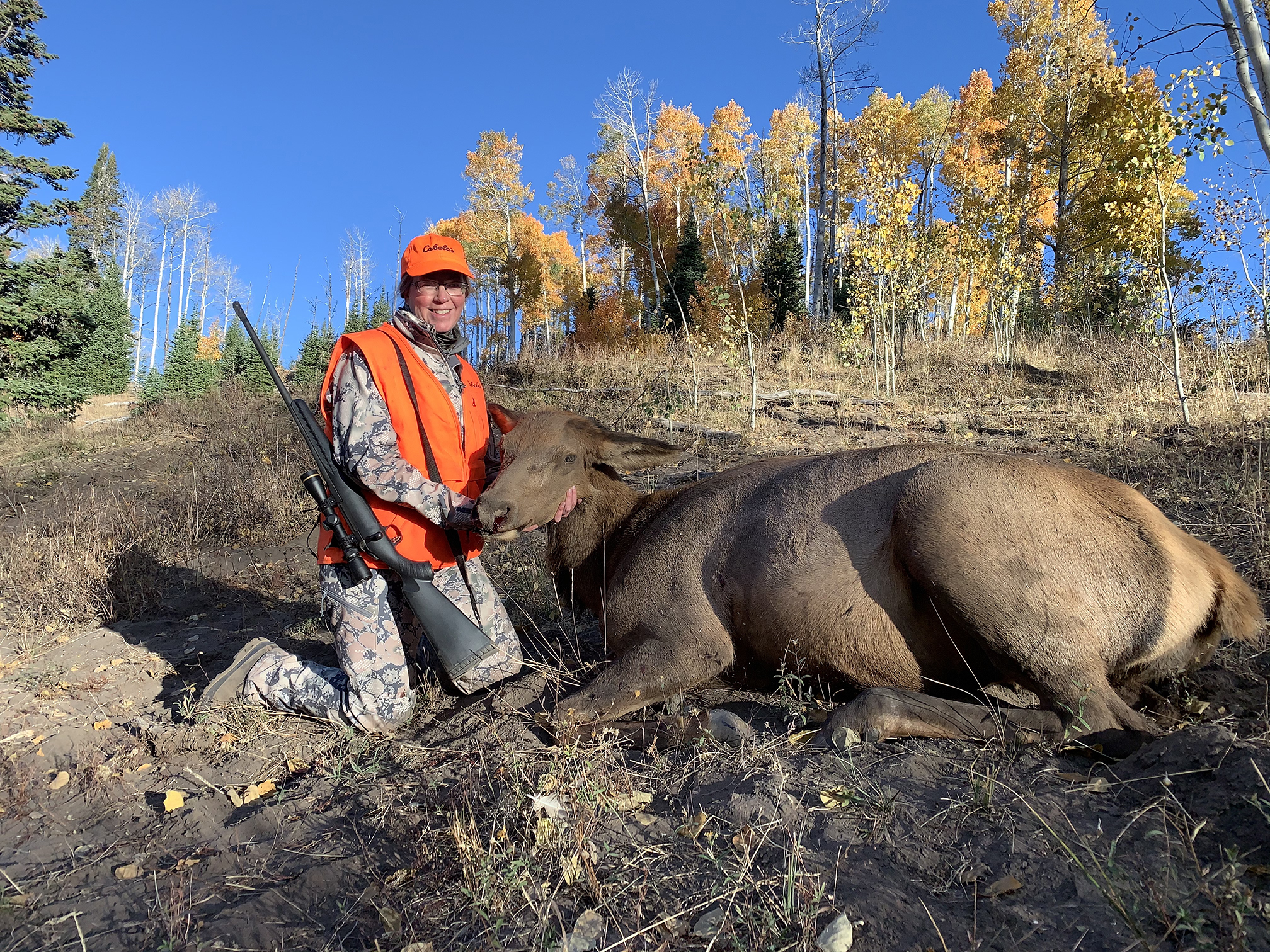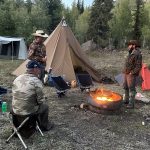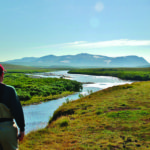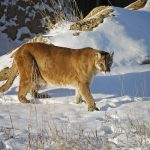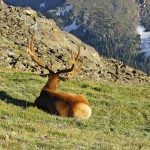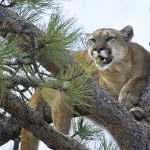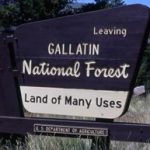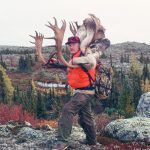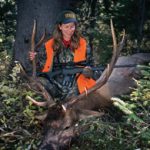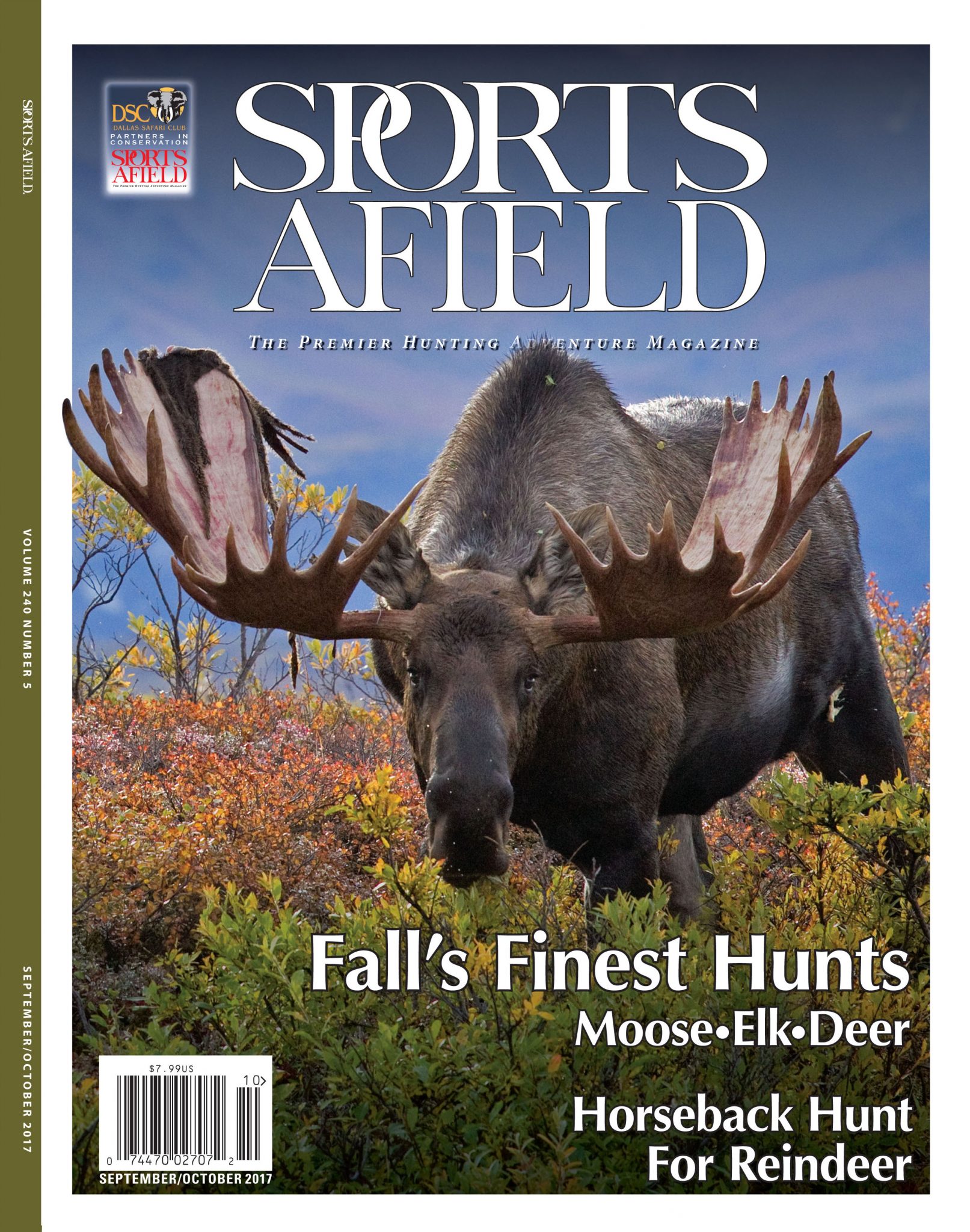Improve your hunting skills and do your part for wildlife management by filling a doe or cow elk tag.
Photo above: Calling in this cow elk on public land in Colorado made for an exciting and memorable hunt. Photo by Trail’s End Media
It was a beautiful fall morning in the Colorado high country. I was sitting with my back against a tree, rifle across my knees, watching as dawn slowly brightened a grassy opening that was ringed with the brilliant gold of aspen trees at the height of their autumn glory.
A piercing bugle sounded from somewhere behind me. A real bull, I wondered, or another hunter? This was national forest land, and there were plenty of other hunters around, so I couldn’t be sure. I sat still and waited. From roughly that same direction came a series of chirps and mews. Cow elk. I sat up straighter. Maybe there were actual elk close by.
My husband, Scott, was sitting against another tree about ten yards behind me, facing in the opposite direction. I was the one with the either-sex elk tag, so he held a call instead of a rifle. He had heard the cow-chirps, too, so he let out one of his own.
The forest was silent for a few minutes, and then he chirped again, softly. Almost instantly, there was a crashing noise and a rustling of leaves, followed by Scott’s low warning: “Elk coming!”
The rifle came to my cheek as I caught a flash of movement from my left. Two cow elk trotted past me, just fifty yards away. I was glad I had turned my scope to its lowest setting. I quickly verified that neither animal had antlers, then swung the cross hairs to the front of the lead elk’s chest and fired. She stumbled, ran forward, and stopped broadside a hundred yards away. I racked the bolt and put a second round through the center of her shoulder, and she dropped in her tracks as the second elk vanished through the trees.
I watched the elk in the scope for a few moments to ensure she wasn’t moving, put the rifle on safety, and then got shakily to my feet, the adrenaline rush still surging. Scott and I looked at each other, wide-eyed. “Wow, that was exciting!” he said.
“You’re not kidding!” I said. “I guess now we know you can call in cow elk just like bulls!”
I wish anyone who thinks a hunt for an antlerless animal can’t be an adrenaline-filled experience could have been with us that morning. Most hunters understand the idea of hunting antlerless elk and deer for meat, but many of them dismiss hunts for does and cows as “too easy” or “not very exciting.” I beg to differ on both points.
Several years ago I was hunting on a snow-covered ridgetop in northern Pennsylvania in early December. I had both a buck and a doe tag in my pocket, and I had been out for several days without getting a shot at either one. I had seen numerous deer, but in this thickly forested region, visibility is rarely more than fifty or sixty yards. That means, unless you sit very still or move with great stealth, deer are going to see you long before you see them.
Still-hunting, or moving very quietly through deer habitat, is a time-honored tradition in this area, and it was a favorite method for old-timers like my dad, who never liked to be stuck in a stand all day. It’s a fascinating and effective way to hunt, but it’s also incredibly difficult. That season, I was determined to pull it off, but I was having trouble making myself move slowly enough. I was working hard to stay quiet and keep the wind in my favor; nevertheless, I was continually bumping deer. Every time I got close, I’d peer through the trees and see white tails waving goodbye as their owners bounded away.
That afternoon, something happened. I finally made myself slow way down, moving just two or three steps at a time, then stopping to glass for several minutes. I actually got so focused I lost track of time, so I have no idea how long I had been in this groove when I spotted the tip of a deer’s ear sticking out from behind a tree on the hillside below me. There were two does browsing on some beech brush, completely unaware of my presence. I dropped one with a single shot at fifty yards, then tobogganed down the snowy slope to put my hands on her warm hide. It may have been “just” a doe, but I still consider that successful still-hunt one of my favorite hunting experiences.
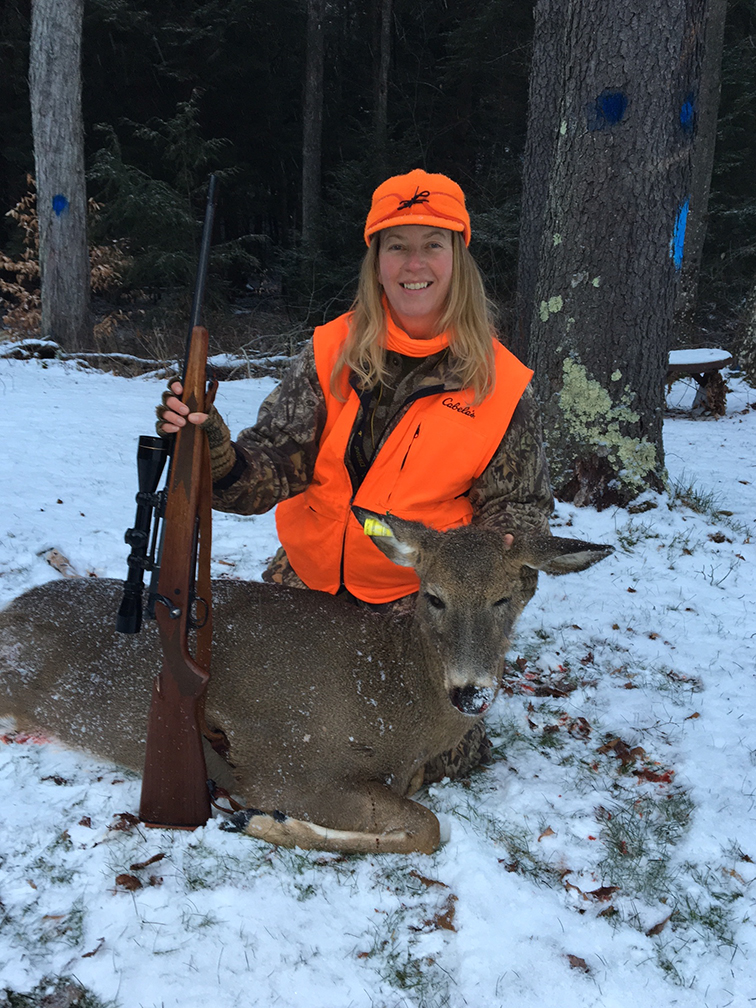
According to the National Deer Association (NDA), most states need to increase their doe harvest. In places where there are more deer than the habitat can support for optimal health of both the animals and the land, hunters can improve their region’s trophy buck potential by shooting more does. It seems paradoxical to buck-only hunters, many of whom can’t understand how taking does can actually strengthen a deer herd and even improve their chances at a good buck. The NDA explains that where there are large numbers of deer, taking some does out improves the health and nutrition of the remaining animals. It also balances the buck-to-doe ratio, which means bucks must move around more during the rut–so hunters are more likely to see them.
According to the Rocky Mountain Elk Foundation, there are also excellent management reasons for taking a cow elk. Reducing an elk herd to fit the carrying capacity of its winter range is important to the long-term health of elk and elk habitat, and taking a cow elk instead of a bull is an effective way to do this. Wildlife agencies issue either-sex tags specifically to encourage hunters to take cows. If more hunters were willing to kill cows in areas where biologists have identified the need to do so, the herds would be healthier and the bull numbers would actually increase. (Taking a cow elk usually also makes the local ranchers happy.)
As I can attest after a long day of packing out my cow elk, these animals provide plenty of excellent eating. A mature cow will yield 150 pounds or more of edible meat. On my cow elk hunt, Scott and I used all the same skills we use on our quests for bulls: identifying good elk habitat, figuring out the terrain, hiking, glassing, calling, making the shot, and of course quartering, boning, and packing out a whole lot of meat.
You may think of cows and does as less wary than their male counterparts, but that’s not necessarily the case. As with all wild animals, they have keenly developed senses, and while you may get lucky, especially in areas where they are abundant, hunting them is not necessarily easy.
Some states, including Colorado and Montana, even issue limited-draw tags for bighorn ewes. This surprised me when I learned about it, since bighorn sheep are hardly overabundant, and bighorn ram tags are among the most highly coveted of all big-game licenses. But in some regions, there are solid management reasons for hunters to take a few female animals out of the sheep population.
The unit where I hunted my bighorn ram in southwestern Colorado is a good example. In 2023, the state issued 14 ram tags and 7 ewe tags for that unit. When I spoke with Jamin Grigg, Southwest Region Senior Biologist for Colorado Parks & Wildlife, he explained that sheep in this area, as in many areas of the West, are “managed for separation.” Although the population is healthy, the threat of disease transmission from domestic sheep herds that graze in the area is a major concern. If bighorn numbers increase too much, they are more likely to come into contact with domestic sheep and contract a highly contagious pneumonia that could spread through the herd.
“We issue ewe tags partly to give hunters increased opportunity, but mostly to mitigate the risk of contact with domestic sheep,” he explained. Now that I know how delicious the meat of bighorn sheep is, and how magical it is to spend time in sheep country with rifle in hand, I would seriously consider applying for a ewe tag.
Hunts for the females of a species build your hunting skills, fill your memory banks, stock your freezer, and improve the health of herds. Tags are often easier to draw and less expensive than those for bucks and bulls, and you’ll gain valuable intel about the game in your chosen hunting area. As a bonus, taking a doe or a cow this year could lead to more and bigger bucks and bulls next year.

